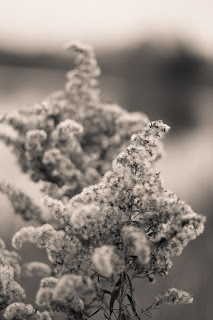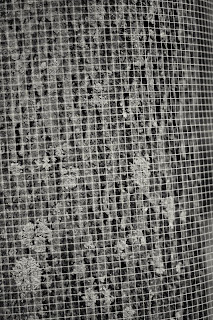The first time you get hold of a fast (i.e. can open up to a very large aperture/very small f-stop) lens and a camera that can do good depth-of-field control, it's like "Wheee!"
However...
You can get carried away. Case in point: I took my camera with a 50mm f1.4 lens on it to the lake yesterday. My plan was to take pictures of seed pods and so forth with a shallow DOF and make all artsy pictures.
I switched to Av mode and opened the lens up all the way, despite the fact that the voices were telling me, "Don't get so nuts with the aperture, doofus."
Well, they were right.

Now that's some pretty shallow DOF - that dark blur in the upper right is a relatively large island in a lake which is only about fifty feet behind this feathery seed pod. Got that part right. However, the DOF is so shallow that a significant portion of the front of the pod is also out of focus. That's not so good. My plane of focus slices right through the middle of the pod, which is exactly what I wanted, but it's overdone. I might have been better off focusing on the front of it, if I had really wanted this shallow a DOF. However, what I really should have done is stopped down another two-thirds or so, say to f2.0, so that while the plane of focus would still have been right in the center, the foreground part of the pod would have not been so blurry. IMO, the picture would look a lot better that way.
In case you were wondering, while it was cloudy, there was tons of light (I love the gorgeous backlighting from the reflection of light off the lake - no polarizer on this shot) and this image was exposed at 1/3200s. It was a little windy, but none of that is motion blur, either from subject motion or camera shake. It would take a hurricane to move a plant enough to get motion blur at 1/3200s! The band of light in the upper-center is the lake, and the band of light in the upper area is the sky. The image is canted slightly in relation to the horizon, which is a relatively thin dark band comprised of the far shore of the lake and some trees.
Here's kind of a cool example of an unexpected DOF effect:

This is a tree trunk wrapped in wire mesh (there are beavers in this park as well as a lot of rabbits and they do this to trees they don't want chewed on.) Notice that since the object is cylindrical there's sort of a diagonal line of focused area. Part of the time the bark is in focus, part of the time the mesh is in focus, and part of the time nothing is in focus depending on where you are in the image. What controls the focal sharpness is absolute distance from the camera: since the object is has a pronounced relative dimension (I was really close to the tree) the areas in focus vary horizontally and vertically.
Summary: don't get nuts, unless you need to get nuts. Back it off a notch and see how it looks.
M

2 comments:
granted i don't understand dick about how to use my camera, what the settings mean and how they apply. the result is i tend to take multiple shots of the same object using different settings, then keep the one i like the most afterwards.
i seriously need to take a class where someone can explain it all to me. i have read the instruction book, blogs, dummies books, kilby's books. i still don't get it.
Yep, you did exactly what I did (and still do) with your fast lens. When I got mine (50mm f/1.4) I went out and shot a card full of flower/plant images in the 1-3 foot range. When I off loaded into Lightroom, I was disappointed with every one of them. I'd forgotten how shallow depth of field is at that f/stop. In the distance I was shooting, the total DOF was less than 3/4 of an inch at three feet and some minute fraction at one foot. I still go crazy with it, but now I know what to expect. None-the-less, I love this lens for indoor available light photography.
Post a Comment